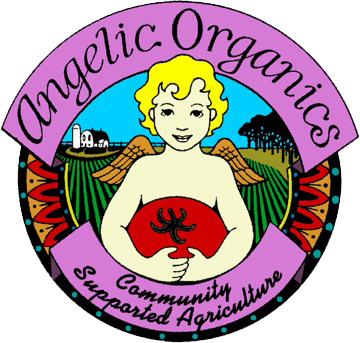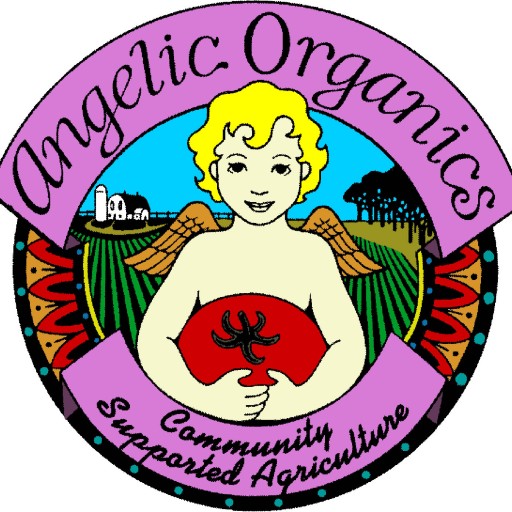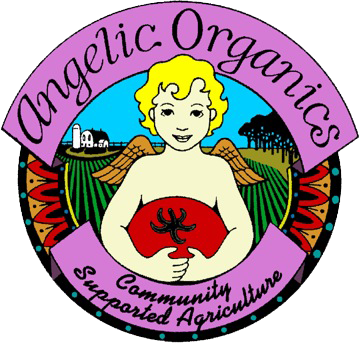The Barn is There
The following essay by Farmer John is reprinted from the Farm News: Week 6, August 10, 1996
Rudolf Steiner, in his Agriculture Course lectures, which are the foundation for Biodynamics, spoke about the individualization of the farm. He saw the farm as a unique organism, with its own emanations based on its history, its terrain, soil type, the plants and animals on that land, the farmer’s personality, and the influences of the other helpers on that farm. He perceived that the earth was gradually weakening in its vitality, and he suggested that a way to restore some of that vitality, to give back to the earth, was to develop the farm along certain holistic principles. As you may remember from Sheri Wildfeuer’s synopsis of Biodynamics, which we included in the newsletter a couple weeks back, Steiner recommended using specific potentized herbal preparations to invigorate and harmonize the soil and plants. He also advocated a reintegration of agricultural enterprises which are now very specialized, such as livestock, perennial, vegetable operations. These different life forms, in proximity to one another, attract and emanate different cosmic energies, Steiner claimed, and these energies are enhanced when in a state of synergy with one another. His suggestions about farming in a way that truly contributes to the earth included the establishment of woodlands, bee hives, orchards, and pastures for livestock. Bees, birds, flowers, trees, soil micro-organisms, earthworms, cows, pigs-all these living things offer vitality, balance, life force, to one another. When these different influences mingle, the individuality of the farm comes forth. This concept of empowerment or enlivening of the earth, through the incorporation of Biodynamic principles and resulting evolution of the farm organism, has motivated some people to dedicate their lives to the Biodynamic movement.
I am very compelled by this ‘individualizing’ of the farm organism. Since childhood, I have been fascinated with farms. Driving through the country was a most stimulating experience. I loved looking at the farms: how the fields were laid out; how the buildings were situated, their color, sizes, forms and states of repair; the landscaping of the farmsteads; the livestock and the pens and corrals; the condition of the crops. Each farm was a fascinating story-these physical outgrowths were where the farmer interfaced with the land. The barn is that big, I would think. It is not bigger. It could have been bigger. It could have been smaller. It is that big. The farmer made it like that. He put it there, right there. He could have put it a little to the left, or to the right, but he put it there. Then I would see another farm, and I would contemplate that farm. I would notice the relationships of the farms to one another, how they sat separate like islands, like outposts, how they each were surrounded with their own silence and their own robustness, and how this emanation of each farm’s individuality somehow made them seem more connected to other farms, not more isolated. I would gaze out over these separated farmsteads, and see their noble separateness and their sublime unity, and how these qualities supported one another. This, I believe, is the source of that ‘neighborliness’ that farmers are legendary for. Their farms were self-contained, the farmers were self-contained, and that autonomy let the farmers be more friendly, more giving-they could draw from an internal source.
An exciting adjunct to this rural viewing was to stop at the local restaurants and to hear the farmers talk. Their mannerisms and bodies carried as much individuality as their farmsteads. I would sit there, watching and listening, and I would feel the elements of nature swirling about me; the winds and droughts and rains carried right into their speech and walk and faces.
These personalities of the farms, expressed through the farmers, have their roots in a time when agriculture was more in balance, when farms were more diversified and before chemicals were widespread. These expressions exist more as remnants today. Today’s agricultural forces are flattening the personalities of the farms and the farmers. There are certainly echoes of these expressions, especially in the more remote rural areas, but the trend is towards homogenization. In my community, whereas once the farmers dominated certain cafes, perhaps filling the whole counter at certain hours, now they have shrunk to a tiny minority, just two or three, hunched over coffee and talking a dying language.
These remains of a once viable farm culture contain, I believe, some of those elements of individualization that Steiner advocated for farms. His recommendations for creating the farm organism obviously go beyond what has been practiced in American agriculture, even when it was flourishing, but American farms were once more autonomous, more self-contained, more diversified, and more self-expressed, even if they did not achieve the Biodynamic ideal.
Interestingly, I noticed for the first time in this country in many years, farmer individualities in a large group situation-the Upper Midwest CSA Conference. I thought here are farmers being worked through by their farms again. Here are farmers who are being taken hold of by their farms, in their speech and in their bodies. This was a most poetic experience for me, to feel these forces at work again. For a long time, I have been getting this satisfaction from being in Mexico, where many people are still intimate with the earth. And here it was, a stirring (stirring!) of this individualizing impulse, in my own region.


